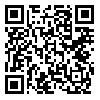Thu, Jan 1, 2026
Volume 33, Issue 4 (9-2023)
JHNM 2023, 33(4): 297-305 |
Back to browse issues page
Download citation:
BibTeX | RIS | EndNote | Medlars | ProCite | Reference Manager | RefWorks
Send citation to:



BibTeX | RIS | EndNote | Medlars | ProCite | Reference Manager | RefWorks
Send citation to:
Özbudak G, Yıldırım Y. Nonpharmacological Methods Used for Dyspnea Management by Individuals With Lung Cancer. JHNM 2023; 33 (4) :297-305
URL: http://hnmj.gums.ac.ir/article-1-2194-en.html
URL: http://hnmj.gums.ac.ir/article-1-2194-en.html
1- Lecturer, Department of Nursing, School of Health, Trakya University Kesan Hakkı Yörük, Edirne, Turkey. , gizem-ozbudak@hotmail.com
2- Professor, Internal Medicine Nursing, School of Nursing, Ege University Izmir, Turkey.
2- Professor, Internal Medicine Nursing, School of Nursing, Ege University Izmir, Turkey.
Abstract: (1342 Views)
Introduction: Dyspnea, one of the most common symptoms in individuals with lung cancer, affects the patient’s quality of life and functions.
Objective: This study aimed to determine nonpharmacological methods lung cancer patients use for dyspnea management and to evaluate their opinions, needs, and preferences regarding these methods
Materials and Methods: In this cross-sectional study, 60 patients were included. They were treated in an outpatient chemotherapy unit and agreed to participate. The study data were collected using the “patient self-description form”, “verbal rating scale”, “dyspnea frequency determination form”, and “dyspnea management form”. Descriptive statistics, the chi-square test, and the Kruskal-Wallis test were used to analyze the obtained data. The significance level was considered <0.05.
Results: The study samples comprised 65% males and 35% females with a Mean±SD age of 63.6±1.73 years. The Mean±SD verbal rating scale score of the patients was 5.2±2.6 (from 0 to 10), and the frequency rates of dyspnea were as follows: 48.3% “a few times a week”, 26.7% “a few times every day”, 10% “less than once a week”, 8.3% “once a week”, and 6.7% “all the time”. As a result of the study, it was found that the methods of slowing down (96.7%), resting and not exerting effort (93.3%), sitting position, and elevating the head of the bed (90%) were frequently used. Also, it was found that using a fan on the face (25%) and acupuncture (1.7%) were used less frequently. Results also showed female patients used listening to music (P=0.028) and daydreaming (P=0.042) more than male patients.
Conclusion: Dyspnea is a common symptom in individuals with lung cancer, but its management is still inadequate, and we know little about effective coping strategies. The factors that most affect the perception of dyspnea are known as physiological factors. Still, it should be remembered that psychological, emotional, and environmental factors are also effective in shortness of breath.
Objective: This study aimed to determine nonpharmacological methods lung cancer patients use for dyspnea management and to evaluate their opinions, needs, and preferences regarding these methods
Materials and Methods: In this cross-sectional study, 60 patients were included. They were treated in an outpatient chemotherapy unit and agreed to participate. The study data were collected using the “patient self-description form”, “verbal rating scale”, “dyspnea frequency determination form”, and “dyspnea management form”. Descriptive statistics, the chi-square test, and the Kruskal-Wallis test were used to analyze the obtained data. The significance level was considered <0.05.
Results: The study samples comprised 65% males and 35% females with a Mean±SD age of 63.6±1.73 years. The Mean±SD verbal rating scale score of the patients was 5.2±2.6 (from 0 to 10), and the frequency rates of dyspnea were as follows: 48.3% “a few times a week”, 26.7% “a few times every day”, 10% “less than once a week”, 8.3% “once a week”, and 6.7% “all the time”. As a result of the study, it was found that the methods of slowing down (96.7%), resting and not exerting effort (93.3%), sitting position, and elevating the head of the bed (90%) were frequently used. Also, it was found that using a fan on the face (25%) and acupuncture (1.7%) were used less frequently. Results also showed female patients used listening to music (P=0.028) and daydreaming (P=0.042) more than male patients.
Conclusion: Dyspnea is a common symptom in individuals with lung cancer, but its management is still inadequate, and we know little about effective coping strategies. The factors that most affect the perception of dyspnea are known as physiological factors. Still, it should be remembered that psychological, emotional, and environmental factors are also effective in shortness of breath.
Article Type : Research |
Subject:
Special
Received: 2023/06/28 | Accepted: 2023/06/29 | Published: 2023/06/29
Received: 2023/06/28 | Accepted: 2023/06/29 | Published: 2023/06/29
Send email to the article author
| Rights and permissions | |
 | This work is licensed under a Creative Commons Attribution-NonCommercial 4.0 International License. |






